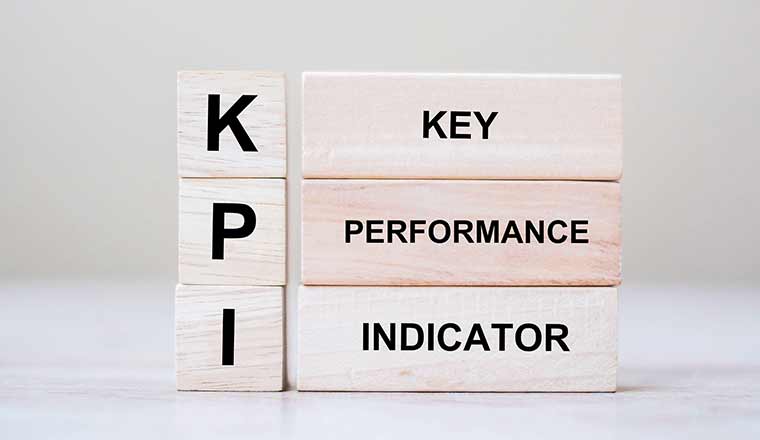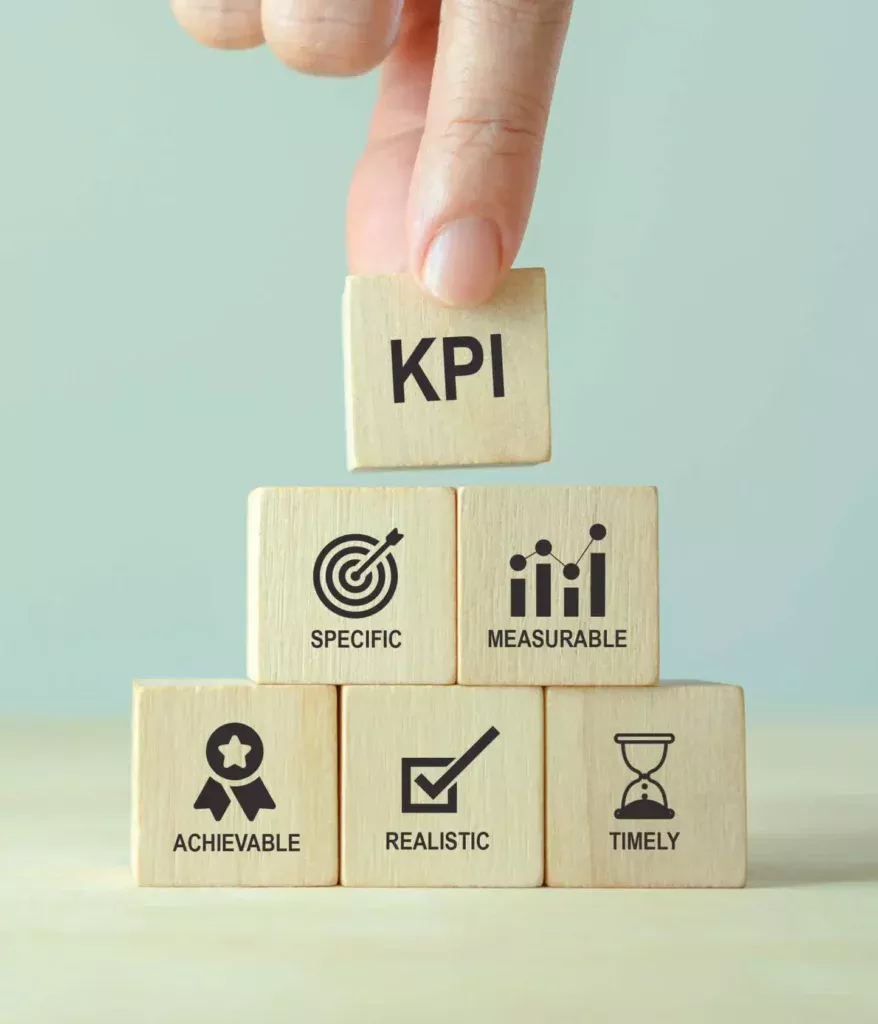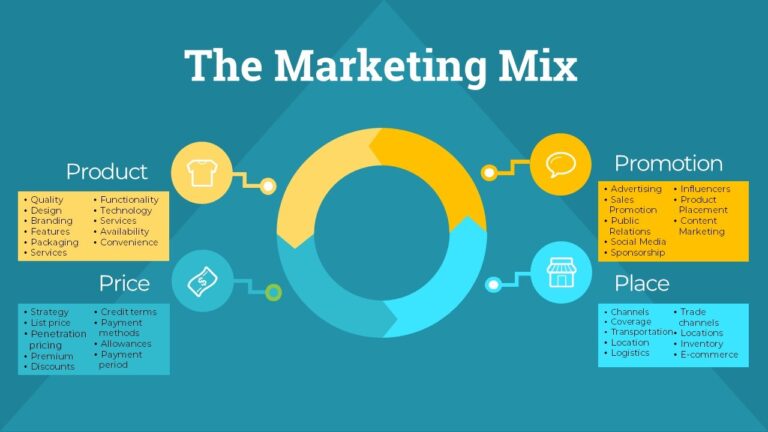Key Performance Indicators (KPIs): Navigating Success in the Modern Business Landscape
In today’s dynamic and competitive business landscape, the pursuit of success requires more than just intuition and gut feeling. It demands a strategic, data-driven approach that empowers organizations to make informed decisions, optimize performance, and stay ahead of the curve. This is where Key Performance Indicators (KPIs) step in as the compass that guides businesses on their journey to excellence. KPIs are powerful metrics that provide a clear and objective view of an organization’s performance, illuminating both triumphs and areas for improvement. From financial and customer-centric metrics to operational and sustainability benchmarks, the world of KPIs is rich and diverse, catering to the needs of various industries and business sizes.
Join us in an illuminating exploration of the world of Key Performance Indicators (KPIs) in our comprehensive post. We will delve into the MECE framework, a powerful tool for organizing KPIs effectively, enabling businesses to navigate the vast landscape of performance metrics with clarity and purpose. Discover the importance of KPIs in measuring organizational success, and how they serve as the cornerstone for informed decision-making and continuous improvement. Whether you are a seasoned business leader or an aspiring entrepreneur, our journey through the realm of KPIs will equip you with the knowledge and insights to steer your organization towards sustainable success in the ever-evolving business landscape.
What are Key Performance Indicators (KPIs)?
In the fast-paced and data-driven world of business, Key Performance Indicators (KPIs) serve as vital metrics that enable organizations to measure their performance, progress, and success. KPIs are quantifiable, specific, and actionable indicators that provide valuable insights into various aspects of an organization’s operations, helping to gauge how effectively it is achieving its goals and objectives.
B. The Significance of KPIs in Measuring Organizational Success
The old adage “what gets measured gets managed” holds true in the realm of KPIs. These performance indicators offer organizations a clear and objective view of their strengths, weaknesses, and areas for improvement. By tracking and analyzing KPIs, businesses can make data-driven decisions, identify trends, and align their efforts with strategic objectives, all of which are crucial for achieving long-term success.
C. Overview of the MECE Framework for Organizing KPIs Effectively
To harness the full potential of KPIs, businesses can utilize the MECE framework—Mutually Exclusive, Collectively Exhaustive. This structured approach ensures that KPIs are well-organized, non-duplicative, and comprehensive, allowing organizations to focus on key areas without overlooking critical aspects of their performance. By adopting the MECE framework, businesses can gain clarity, precision, and a holistic understanding of their performance landscape, paving the way for effective decision-making and continuous improvement.
In this comprehensive blog post, we delve into the world of Key Performance Indicators (KPIs), exploring their definitions, significance, and the strategic approach provided by the MECE framework. Whether you are a seasoned business leader seeking to optimize your organization’s performance or an aspiring entrepreneur looking to steer your startup towards success, this guide will equip you with the knowledge and tools needed to harness the power of KPIs effectively. So, let’s embark on this journey to unlock the potential of KPIs and propel your organization towards measurable achievements and sustained growth.
What are the types of KPIs?
I. Financial KPIs
A. Revenue-Related KPIs
In the realm of financial KPIs, revenue-related metrics take centre stage as they directly reflect the organization’s ability to generate income and drive growth. Among the key revenue-related KPIs are:
- Sales Growth: This KPI measures the percentage increase or decrease in sales over a specific period, providing insights into the company’s sales performance and market demand.
- Profit Margins: Profit margins, such as Gross Profit Margin and Net Profit Margin, reveal the percentage of revenue retained after deducting various costs, offering a clear picture of the company’s profitability.

B. Expense-Related KPIs
While generating revenue is vital, managing expenses is equally crucial for overall financial health. Expense-related KPIs shed light on cost management and efficiency. Some important expense-related KPIs include:
- Cost of Goods Sold (COGS): COGS represents the direct costs incurred in producing goods or services, and tracking this KPI is essential for maintaining healthy profit margins.
- Operating Expenses Ratio: This KPI assesses the efficiency of daily operations by measuring operating expenses as a percentage of revenue, helping businesses monitor their cost structures.
C. Liquidity and Financial Stability KPIs
Financial stability is a critical aspect of a company’s resilience and long-term success. Liquidity and financial stability KPIs gauge the company’s ability to meet short-term obligations and manage debt effectively. Key liquidity and financial stability KPIs include:
- Current Ratio: The current ratio measures the company’s short-term liquidity by comparing current assets to current liabilities, ensuring it has enough assets to cover immediate obligations.
- Debt-to-Equity Ratio: This KPI assesses the company’s leverage by comparing its total debt to shareholders’ equity, revealing its reliance on debt financing.
By diligently tracking these financial KPIs, organizations can gain valuable insights into their financial health, identify areas for improvement, and make informed decisions to bolster their financial performance. Whether in times of growth or challenges, financial KPIs provide a compass to steer businesses towards a stable and prosperous future.
II. Customer-Centric KPIs
A. Customer Satisfaction and Net Promoter Score (NPS)
In the realm of customer-centric KPIs, the focus shifts to understanding and measuring customer satisfaction, loyalty, and advocacy. These KPIs provide invaluable insights into how well a company is meeting its customers’ expectations and fostering positive relationships. Key customer-centric KPIs include:
- Customer Satisfaction (CSAT): CSAT measures the level of satisfaction customers have with a specific product, service, or interaction, often obtained through post-purchase surveys or feedback forms.
- Net Promoter Score (NPS): NPS gauges customer loyalty and the likelihood of recommending the company to others. It categorizes customers into Promoters (loyal enthusiasts), Passives (satisfied but not enthusiastic), and Detractors (unhappy customers).
B. Customer Retention Rate and Churn Rate
Acquiring new customers is vital, but retaining existing ones is equally crucial for sustainable growth. Customer retention and churn KPIs offer a glimpse into customer loyalty and the effectiveness of retention efforts. Important customer-centric KPIs in this category include:
- Customer Retention Rate: This KPI measures the percentage of customers that a company has retained over a specific period, indicating customer loyalty and satisfaction.
- Churn Rate: The churn rate represents the percentage of customers who have stopped using the company’s products or services, reflecting customer attrition.
C. Customer Lifetime Value (CLV) and Customer Acquisition Cost (CAC)
Understanding the long-term value of customers and the costs associated with acquiring new ones is critical for optimizing marketing and sales strategies. Key customer-centric KPIs in this area are:
- Customer Lifetime Value (CLV): CLV estimates the net value a customer brings to the company over the entire duration of their relationship. It helps assess the profitability of retaining customers and guiding marketing investments.
- Customer Acquisition Cost (CAC): CAC measures the expenses incurred to acquire a new customer, encompassing marketing, sales, and other related costs.

By closely monitoring these customer-centric KPIs, organizations can gain a deeper understanding of their customer relationships, identify areas for improvement, and tailor strategies to meet customers’ needs effectively. By putting the customer at the centre of decision-making, businesses can cultivate loyalty, enhance brand advocacy, and achieve long-term success in an increasingly customer-driven market.
III. Operational KPIs
A. Production Efficiency and Utilization Rate
Operational KPIs focus on the efficiency and effectiveness of an organization’s production processes and resource utilization. Key operational KPIs include:
- Production Efficiency: This KPI measures the level of output achieved in relation to the resources and inputs used in production, indicating the effectiveness of the production process.
- Utilization Rate: Utilization rate assesses how well resources, such as machinery, equipment, or facilities, are utilized to meet production demands efficiently.
B. Inventory Turnover and Order Fulfillment Rate
Efficient inventory management is crucial for maintaining smooth operations and meeting customer demands promptly. Relevant operational KPIs in this area are:
- Inventory Turnover: Inventory turnover measures the number of times inventory is sold and replaced within a specific period, providing insights into inventory efficiency and sales performance.
- Order Fulfillment Rate: This KPI evaluates the percentage of customer orders that are successfully fulfilled within the expected timeframe, reflecting the efficiency of order processing and delivery.
C. Employee Productivity and Downtime Percentage
The performance and productivity of employees directly impact operational success. Essential operational KPIs related to workforce efficiency are:
- Employee Productivity: Employee productivity KPIs assess the output and contribution of employees in relation to their time and effort, enabling businesses to optimize workforce performance.
- Downtime Percentage: Downtime percentage measures the proportion of time during which equipment, machinery, or systems are non-operational, indicating potential inefficiencies and areas for improvement.
IV. Marketing and Sales KPIs
A. Conversion Rate and Lead-to-Customer Ratio
Marketing and sales KPIs are pivotal in evaluating the effectiveness of customer acquisition and conversion efforts. Key KPIs in this domain include:
- Conversion Rate: The conversion rate tracks the percentage of prospects or website visitors who take the desired action, such as making a purchase or signing up for a service.
- Lead-to-Customer Ratio: This KPI measures the conversion rate of leads into paying customers, revealing the efficiency of the sales funnel and lead nurturing strategies.
B. Return on Investment (ROI) for Marketing Campaigns
Marketing ROI is a critical KPI that quantifies the profitability and success of marketing investments and campaigns, providing valuable insights for optimizing marketing strategies.
C. Customer Acquisition and Customer Lifetime Value (CLV)
Understanding the cost of acquiring new customers and their long-term value is essential for sustainable growth. Customer-centric marketing and sales KPIs in this category are:
- Customer Acquisition: Customer acquisition KPIs assess the cost and effectiveness of acquiring new customers through various marketing and sales efforts.
- Customer Lifetime Value (CLV): As mentioned in a previous section, CLV quantifies the net value of a customer over the entire relationship, guiding customer retention strategies and marketing investments.
By monitoring and optimizing these operational, marketing, and sales KPIs, organizations can streamline their operations, enhance customer relationships, and drive growth in a data-driven and efficient manner. These performance metrics serve as a compass to guide businesses towards improved operational excellence and success in their marketing and sales endeavours.
V. Quality and Performance KPIs
A. Defect Rate and Quality Assurance Compliance
Maintaining high-quality products and services is paramount for customer satisfaction and business success. Key quality and performance KPIs include:
- Defect Rate: The defect rate KPI measures the percentage of products or services that do not meet the specified quality standards, reflecting the organization’s commitment to delivering excellence.
- Quality Assurance Compliance: This KPI evaluates the organization’s adherence to quality assurance processes and standards, ensuring consistency and reliability in the production or service delivery.
B. Overall Equipment Effectiveness (OEE)
In manufacturing and operations, OEE is a crucial KPI that assesses the efficiency and performance of equipment and machinery. OEE considers factors such as availability, performance, and quality to gauge overall equipment effectiveness and identify areas for improvement.
C. Service Level Agreements (SLAs) and Customer Response Time
For service-oriented businesses, meeting customer expectations and response time commitments are essential for building trust and loyalty. Key performance indicators in this area are:
- Service Level Agreements (SLAs): SLAs are contractual agreements that define the expected level of service and response times, helping to manage customer expectations.
- Customer Response Time: This KPI measures the time it takes for the organization to respond to customer inquiries or resolve issues, reflecting the efficiency of customer service operations.
VI. Sustainability and Corporate Social Responsibility (CSR) KPIs
A. Carbon Footprint and Energy Consumption
Amid growing environmental concerns, organizations are increasingly focusing on sustainability and carbon footprint reduction. Key sustainability and CSR KPIs include:
- Carbon Footprint: Carbon footprint measures the total greenhouse gas emissions generated by an organization, reflecting its environmental impact.
- Energy Consumption: This KPI assesses the organization’s energy usage, driving efforts to optimize energy efficiency and reduce environmental impact.
B. Waste Reduction and Recycling Rates
Effective waste management is integral to responsible business practices. Relevant sustainability KPIs in this area are:
- Waste Reduction: The waste reduction KPI measures the organization’s success in minimizing waste generation and promoting sustainable practices.
- Recycling Rates: This KPI evaluates the percentage of waste that is recycled or diverted from landfills, showcasing the commitment to environmental stewardship.
C. Social Impact and Community Engagement
Corporate Social Responsibility (CSR) extends beyond environmental concerns, encompassing social initiatives and community involvement. Key CSR KPIs include:
- Social Impact: Social impact KPIs assess the organization’s contributions to social causes, community development, and philanthropic efforts.
- Community Engagement: This KPI measures the organization’s involvement in community projects, initiatives, and partnerships, reflecting its commitment to giving back to society.
By embracing quality and performance KPIs and incorporating sustainability and CSR KPIs, organizations can drive positive change, enhance stakeholder trust, and position themselves as responsible and sustainable entities. These metrics not only reflect the organization’s values and impact but also contribute to its long-term viability and relevance in a socially-conscious world.
VII. Project Management KPIs
A. Project Timeline Adherence and Resource Utilization
In the realm of project management, KPIs play a crucial role in ensuring the successful execution of projects within the defined timelines and resource constraints. Key project management KPIs include:
- Project Timeline Adherence: This KPI evaluates how well a project adheres to the planned schedule, ensuring timely completion and effective project management.
- Resource Utilization: Resource utilization KPIs assess how efficiently project resources, such as manpower and equipment, are utilized, optimizing resource allocation for maximum productivity.
B. Budget Variance and Project Risk Management
Effectively managing project budgets and mitigating risks is essential for project success. Pertinent project management KPIs in this category are:
- Budget Variance: The budget variance KPI measures the difference between the actual project expenditures and the budgeted amount, helping to control costs and identify potential cost overruns.
- Project Risk Management: This KPI evaluates how well risks are identified, assessed, and managed throughout the project lifecycle, ensuring proactive risk mitigation.
C. Project Scope and Stakeholder Satisfaction
Clarity in project scope and stakeholder satisfaction is critical for project alignment and success. Key project management KPIs in this area include:
- Project Scope: The project scope KPI measures the degree to which the project’s defined scope is achieved, managing expectations and preventing scope creep.
- Stakeholder Satisfaction: This KPI assesses the satisfaction levels of project stakeholders, including clients, team members, and sponsors, ensuring their needs are met and enhancing collaboration.

Conclusion
By adopting this structured approach, businesses can gain a clear and holistic view of their performance landscape, enabling effective decision-making and strategic planning. Key Performance Indicators serve as guiding lights in the business realm, providing organizations with objective insights to make informed decisions, optimize processes, and drive continuous improvement. Embracing KPIs empowers businesses to align their efforts with strategic objectives, identify areas for growth, and respond proactively to challenges.
As the business landscape evolves, the significance of KPIs continues to grow. We encourage businesses of all sizes and industries to adopt a well-organized KPI system, leveraging the power of these performance metrics to stay competitive, customer-centric, and sustainable. By embracing KPIs as compasses that navigate organizations towards success, businesses can embark on a journey of growth, innovation, and enduring prosperity.
In conclusion, the world of Key Performance Indicators is vast, diverse, and transformative. Armed with the knowledge and understanding of the different KPI categories explored in this post, businesses have the potential to unlock new levels of performance and achieve remarkable success. As you chart your path forward, let these KPIs be your trusted allies, propelling your organization towards a future filled with achievement, impact, and lasting significance.
Featured Image by rawpixel.com on Freepik





